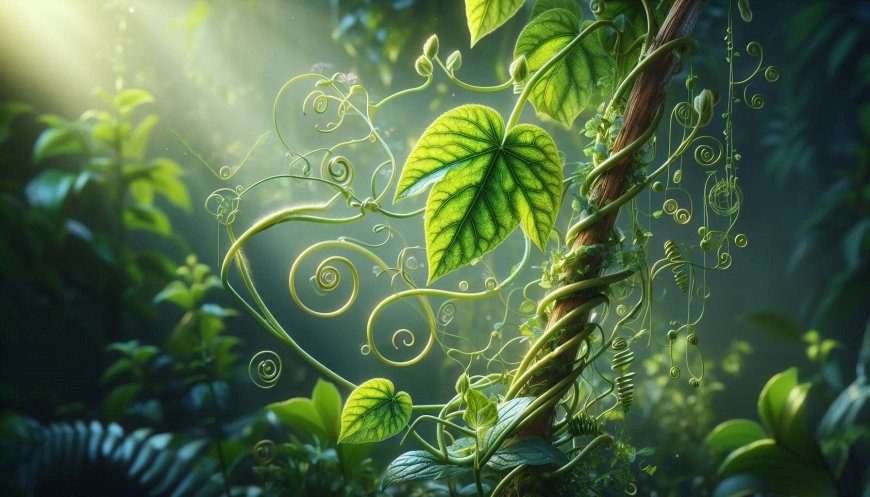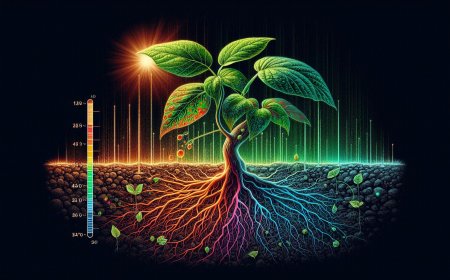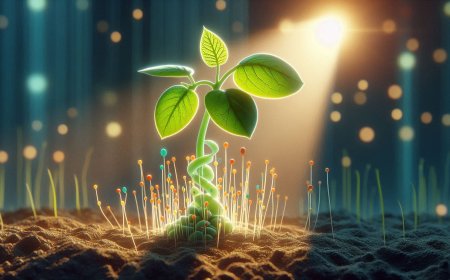Exploring Haptotropism: The Secret Sense of Touch in Plants
Explore the fascinating concept of haptotropism in plants, where they grow and bend in response to physical touch. Learn how climbing plants utilize this ability to reach sunlight and resources.

Plants are often thought of as passive organisms, silently growing and thriving under sunlight. Yet, within their green structures lies a surprising responsiveness to the environment, including an extraordinary ability to sense touch. One captivating example of this is haptotropism, a form of tropism (movement or growth in response to external stimuli) where plants respond specifically to physical contact.
What is Haptotropism?
Haptotropism, also called thigmotropism, is a directional growth response triggered when plants physically touch an object or surface. Unlike phototropism, which involves growth toward light, haptotropism enables plants to react to solid objects, often leading them to grow along walls, fences, or other structures they encounter. This touch-sensitive growth pattern is crucial for survival, especially in climbing plants like vines, which rely on other structures to support their growth toward sunlight.
The Science Behind Haptotropism
In plants, haptotropism is largely governed by specialized cells that can detect pressure or touch. When the cells on one side of a stem or tendril come into contact with a surface, they release hormones called auxins that stimulate growth on the opposite side. This differential growth causes the plant to bend toward the surface, securing itself and enabling it to climb or spread over structures.
Auxins play a critical role in modulating the plant’s response, making haptotropism both a biochemical and mechanical reaction. Upon detecting a surface, the plant cells produce more auxins on the untouched side, while growth is reduced on the side in contact with the surface. The result is a bending effect, with the plant wrapping or clasping around the object.
Examples of Haptotropism in Nature
- Vines and Climbers: Vines like peas, beans, and grapevines exhibit haptotropism as their tendrils grow in spirals and latch onto surfaces, helping them reach sunlight.
- Sensitive Plants (Mimosa pudica): Known for their touch response, the leaves of the Mimosa pudica plant fold up when disturbed—a more immediate reaction but related to the same sensitivity seen in haptotropism.
- Carnivorous Plants: Venus flytraps and sundews have evolved a unique form of thigmotropism. While they don’t use it to climb, they utilize their sensitivity to touch for capturing prey.
Why is Haptotropism Important?
Haptotropism enables plants to maximize sunlight exposure and space efficiency, especially in crowded environments where every inch toward the light counts. Without this ability, many plants would struggle to compete for resources. Climbing plants, which naturally grow toward light with limited structural support, rely on haptotropism to grow vertically or horizontally along supportive surfaces. Additionally, for carnivorous plants, touch sensitivity has evolved as a survival mechanism, enabling them to trap insects and supplement their nutrient intake.
The Future of Haptotropism Research
The study of haptotropism opens exciting avenues in botany and agriculture. Understanding how plants sense and respond to physical contact could inform agricultural practices, such as developing crops with tailored support structures or even engineering plants that can grow optimally in confined spaces, like vertical farms or urban environments.
Conclusion
Haptotropism reveals the surprising ways in which plants interact with their environment, showcasing that their growth is far from passive. With their remarkable ability to sense touch, plants exemplify adaptability and resilience, quietly teaching us that even the smallest interactions in nature carry profound significance.
What's Your Reaction?





























